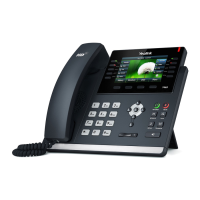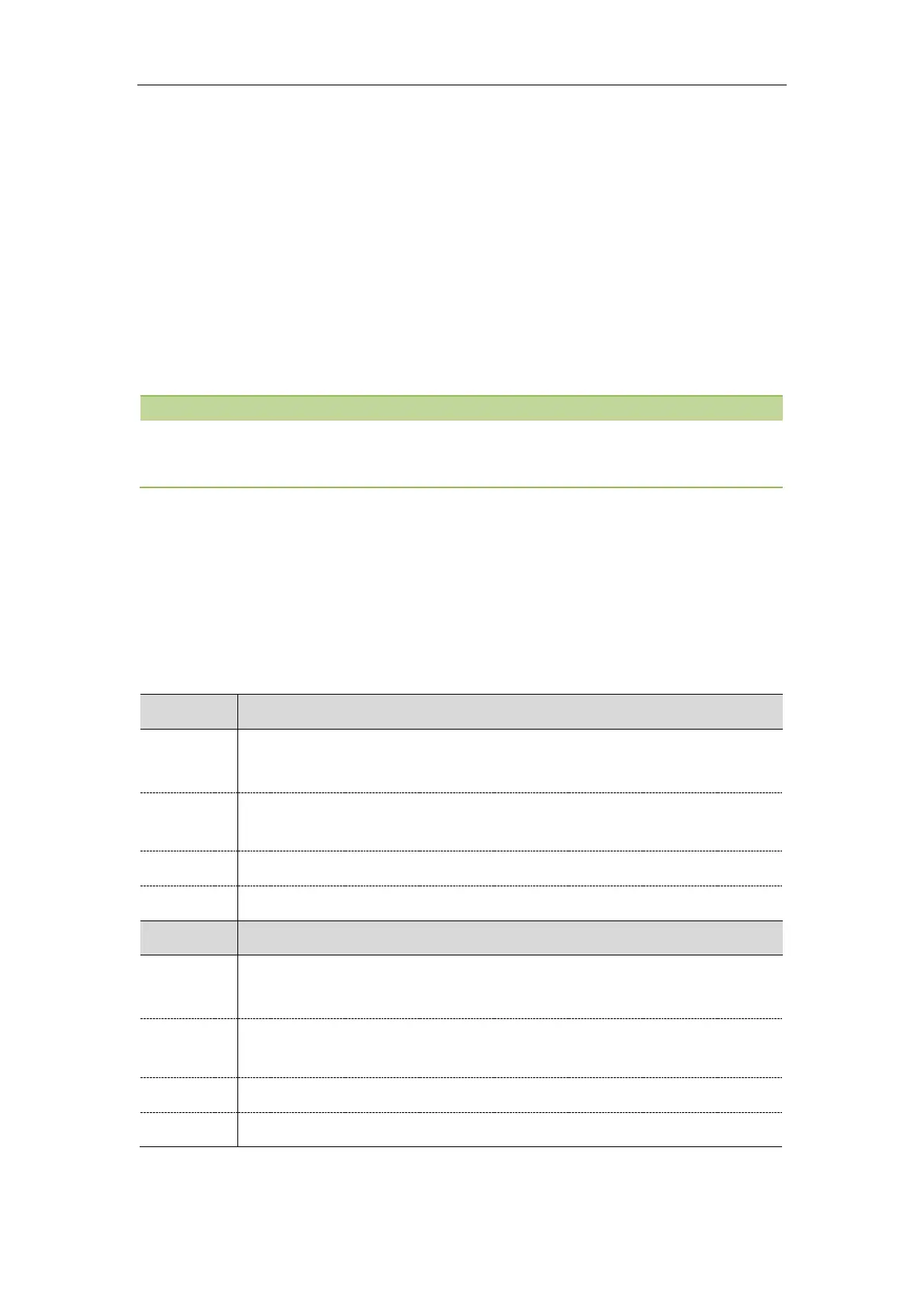Administrator’s Guide for SIP-T2 Series/T4 Series/T5 Series IP Phones
44
Voice QoS
In order to make VoIP transmissions intelligible to receivers, voice packets should not be dropped,
excessively delayed, or made to suffer varying delay. DiffServ model can guarantee high-quality voice
transmission when the voice packets are configured to a higher DSCP value.
SIP QoS
SIP protocol is used for creating, modifying, and terminating two-party or multi-party sessions. To ensure
good voice quality, SIP packets emanated from IP phones should be configured with a high transmission
priority.
DSCPs for voice and SIP packets can be specified respectively.
For voice and SIP packets, the IP phone obtains DSCP info from the network policy if LLDP feature is
enabled, which takes precedence over manual settings. For more information on LLDP, refer to LLDP
Configuration.
Topic
Voice and SIP QoS Configuration
Voice and SIP QoS Configuration
The following table lists the parameters you can use to configure voice voice and SIP QoS.
static.network.qos.audiotos
[1]
It configures the DSCP (Differentiated Services Code Point) for voice packets.
The default DSCP value for RTP packets is 46 (Expedited Forwarding).
Network->Advanced->Voice QoS->Voice QoS (0~63)
static.network.qos.signaltos
[1]
It configures the DSCP (Differentiated Services Code Point) for SIP packets.
The default DSCP value for SIP packets is 26 (Assured Forwarding).
Network->Advanced->Voice QoS->SIP QoS (0~63)
[1]
If you change this parameter, the IP phone will reboot to make the change take effect.

